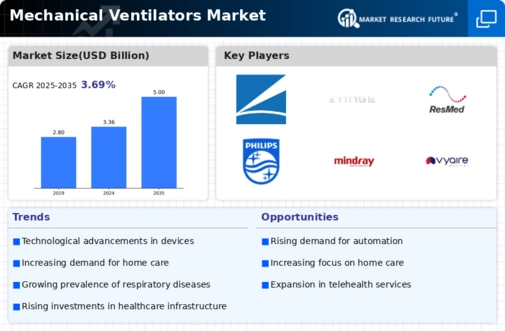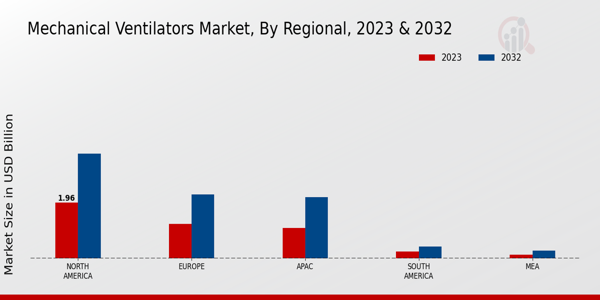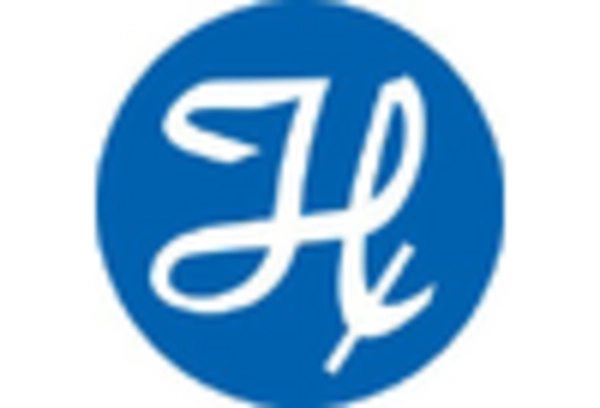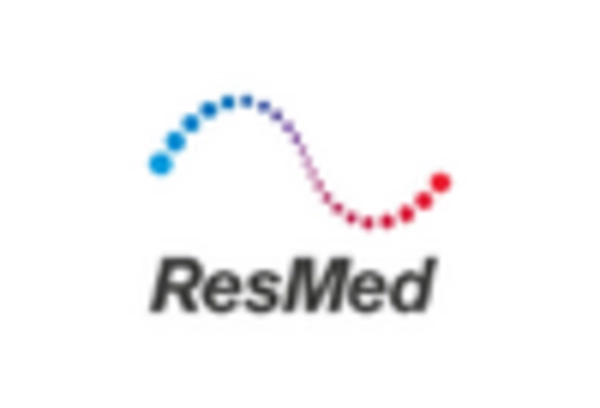Government Initiatives and Funding
Government initiatives aimed at improving healthcare infrastructure are playing a crucial role in the Mechanical Ventilators Market. Increased funding for healthcare facilities, particularly in developing regions, is driving the demand for mechanical ventilators. Governments are recognizing the importance of respiratory care and are investing in advanced medical technologies to enhance patient outcomes. This includes subsidies for purchasing ventilators and support for research and development in respiratory care technologies. As healthcare systems expand and modernize, the need for reliable and efficient mechanical ventilators is likely to grow. Consequently, these initiatives are expected to positively impact the Mechanical Ventilators Market, fostering innovation and accessibility.
Growing Awareness of Respiratory Health
The increasing awareness of respiratory health among the general population is a significant driver of the Mechanical Ventilators Market. Educational campaigns and public health initiatives are emphasizing the importance of respiratory care, leading to a greater understanding of the need for mechanical ventilation in critical situations. This heightened awareness is encouraging patients and healthcare providers to seek advanced ventilatory support options. Furthermore, as more individuals recognize the risks associated with untreated respiratory conditions, the demand for mechanical ventilators is likely to rise. This trend is expected to create opportunities for manufacturers to develop and market innovative solutions tailored to meet the needs of patients and healthcare providers in the Mechanical Ventilators Market.
Technological Innovations in Ventilation
Technological advancements in mechanical ventilation are transforming the Mechanical Ventilators Market. Innovations such as non-invasive ventilation, portable ventilators, and smart ventilatory systems are enhancing patient care and operational efficiency. The integration of artificial intelligence and machine learning into ventilators allows for personalized treatment plans, improving patient outcomes. Moreover, the development of compact and lightweight devices facilitates their use in various settings, including emergency care and home healthcare. As these technologies evolve, they are likely to attract investment and drive market growth. The increasing focus on patient-centered care and the need for efficient respiratory support systems further underscore the importance of these innovations in the Mechanical Ventilators Market.
Rising Demand for Home Healthcare Solutions
The shift towards home healthcare is significantly influencing the Mechanical Ventilators Market. As patients increasingly prefer receiving care in the comfort of their homes, the demand for home-use mechanical ventilators is on the rise. This trend is driven by factors such as cost-effectiveness, improved quality of life, and the desire for personalized care. According to market data, the home healthcare segment is projected to grow at a robust rate, reflecting the changing dynamics of patient care. Additionally, advancements in telemedicine and remote monitoring technologies are facilitating the safe use of ventilators at home. This evolution in healthcare delivery models is likely to propel the Mechanical Ventilators Market forward, as manufacturers adapt their products to meet the needs of home care.
Increasing Prevalence of Respiratory Diseases
The rising incidence of respiratory diseases, such as chronic obstructive pulmonary disease (COPD) and asthma, is a primary driver of the Mechanical Ventilators Market. According to recent data, respiratory diseases account for a substantial portion of global morbidity and mortality. This trend necessitates the availability of advanced mechanical ventilators to manage these conditions effectively. As healthcare systems strive to improve patient outcomes, the demand for sophisticated ventilatory support systems is likely to increase. Furthermore, the aging population, which is more susceptible to respiratory ailments, further amplifies this demand. Consequently, the Mechanical Ventilators Market is expected to witness significant growth as healthcare providers seek to enhance their capabilities in treating respiratory disorders.


















Leave a Comment